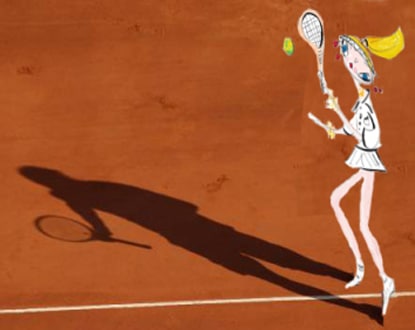Roland Garros is in full swing, and journalists from around the world are competing with each other in imagination, headlining “Paris, temple of clay” at every corner of the sections. Yes, but La Griotte sets the time zones to Greenwich Mean Time with a decisive game, reminding us that these clay courts were invented not in the shadow of Porte d’Auteuil but not far from the Cannes Croisette, by English tennis champions. Amazing, no?

Not wanting to lose their edge, they created a tennis club there with courts on grass, of course. Yes, but…the green grass that suits the English climate so well, does not fare well under the Azurean sun.
While strolling in the area, the Renshaws noticed a peculiar brown earthen powder, escaped from the shattered potteries of Vallauris. They had the idea to cover the Cannes courts with it instead of the scorched green.
Thus were born the clay courts, which would later cover the courts of Nice where Suzanne Lenglen excelled, and the last of the four Grand Slam tournaments created in 1928: Roland Garros. That’s quite a way to pick up the pieces, isn’t it?
So, it was the English, champions of grass-court tennis, who created the clay courts of the Roland Garros tournament, named after a famous…aviator. Funny, isn’t it?
Today, the clay of Roland Garros no longer comes from the Mediterranean shores but from a brick factory in Templeuve (aptly named), a village of 5,000 inhabitants in the countryside near Lille.
Find all the chronicles of La Griotte on her irreverent City Mag!



